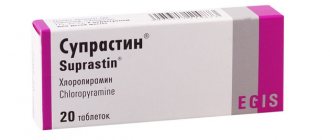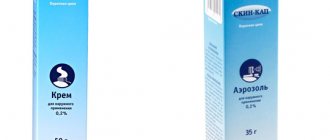Cost: from 1500 rub.
Sign up
Pregnancy is a wonderful time for any woman, especially when it is a planned and desired event in the life of a married couple. Unfortunately, due to various circumstances, pregnancy does not always occur naturally - in such cases, modern medicine offers various procedures of assisted reproductive technologies. This makes a woman’s attitude towards such a natural process even more reverent. And here, often, our skin can present surprises. A number of skin diseases can worsen during pregnancy. However, traditionally prescribed medications have limitations for use in this situation. And here it is important that the specialist has experience in treating such situations.
Our Clinic is in some way unique, since not only the chief physician, who has been a consultant at the Research Institute of Obstetrics and Gynecology named after D.O., has many years of experience in treating women with skin diseases during pregnancy. Ott, but also other specialists who are employees of the Department of Skin Diseases of the First Medical University named after. Academician I.P. Pavlov.
Now let's try to explain the causes and identify the most common skin diseases during pregnancy.
During pregnancy, the main cause of skin damage is considered to be changes in the pregnant woman's immune system. Pathological processes can manifest themselves as exacerbation of chronic skin diseases or the appearance of specific pregnancy-associated dermatoses, the so-called “pregnant dermatoses”.
Changes in the skin are very diverse, both in manifestations and development mechanisms. Conventionally, they can be divided into 3 groups:
I. Stigmas of pregnancy:
Chloasma is the most famous of them. Various functional endocrine-metabolic changes during pregnancy are suggested as a development mechanism. It appears as brownish spots of vague outline, often symmetrical, on the skin of the cheeks, forehead, chin, neck without subjective sensations. Chloasma can occur at different stages of gestation, intensifying as it develops and disappearing without a trace soon after birth. But in subsequent pregnancies, chloasma occurs again. Exposure to sunlight increases the severity of spots.
Melanosis of pregnancy - changes on the skin in the form of hyperpigmentation in the area of the nipples, genitals, white line of the abdomen, also without subjective sensations or inflammatory phenomena. After childbirth, these disorders disappear. Chloasma and melanosis usually do not require special treatment and spontaneously regress after childbirth.
II. Skin diseases relatively often reported during pregnancy:
This group includes a variety of skin changes and diseases that often accompany pregnancy, as well as some common dermatoses, the course of which usually worsens during gestation. The main mechanism is a change in hormonal ratios in the pregnant woman’s body. This, in turn, affects the functionality of the immune and nervous systems, the state of the gastrointestinal tract, kidneys, cardiovascular activity, water-salt metabolism, etc.
This group includes: hyperhidrosis
- hypertrichosis
- Palmoplantar telangiectasias
- erythema of the palms
- alopecia – hair loss
- onychodystrophy - changes in the nail plates
Most of these and other conditions usually disappear after childbirth. If necessary, their treatment is symptomatic.
The course and severity of symptoms of other skin diseases also change during pregnancy. These primarily include eczema, atopic dermatitis, psoriasis, lichen planus, acne, and Dühring's dermatitis herpetiformis. During pregnancy, they often worsen, and exacerbations are usually more pronounced and more severe than before gestation. Sometimes, on the contrary, during pregnancy a remission occurs, which continues until childbirth, after which another exacerbation occurs. Correcting exacerbations of these dermatoses during pregnancy is very difficult. Many medications used under normal conditions affect fetal development. Therefore, external symptomatic therapy becomes the leading method.
Clinical and anamnestic aspects of atopic dermatitis in pregnant women
L.N. SUDUTKINA, V.V. BAYTYAKOV
Mordovian State University named after. N.P. Ogareva, Medical Institute, 430032, Saransk, st. Ulyanova, 26a
Sudutkina Lyudmila Nikolaevna – graduate student of the Department of Hospital Therapy, tel.: +7-937-512-58-33., e-mail
Baytyakov Vladimir Viktorovich - Doctor of Medical Sciences, Associate Professor of the course of skin and venereal diseases, tel.: +7-917-698-49-57;, e-mail: [email protected]
The increasing incidence of atopic dermatitis among adults makes it urgent to study the characteristics of the course of this dermatosis during pregnancy. The article presents data from a survey of 90 pregnant women suffering from atopic dermatitis in the acute stage. The characteristics of the clinical and anamnestic features of these patients are given. The factors contributing to the exacerbation of this pathology and influencing the severity of the disease are analyzed. The issues of pregnancy complications in women suffering from atopic dermatitis are considered. The study established the features of the course of atopic dermatitis depending on the gestational period. New data have been obtained on the prevalence of rashes in the first trimester of pregnancy.
Key words: atopic dermatitis, pregnancy, clinical features.
LN SUDUTKINA, VV BAITYAKOV
Mordovia State University named after NP Ogareva, Medical School, 26a Ulyanov St., Saransk, Russian Federation, 430032
Clinical anamnestic aspects of atopic dermatitis in pregnancy
Sudutkina LN - postgraduate student of the Department of Hospital Therapy, tel.: +7-937-512-58-33, (8342) 32-24-56, e-mail
Baityakov VV - D. Med. Sc., Associate Professor of the Course of Skin and Venereal Diseases, tel.: +7-917-698-49-57, e-mail
The increase of atopic dermatitis incidence in adults causes actuality of comprehensive discussion on the background of dermatitis during pregnancy. The article presents data of the survey of 90 pregnant women with atopic dermatitis in acute stage. The clinical and anamnestic features of these patients are characterized. The factors contributing to the aggravation of this disease and affecting the severity of the disease are analyzed. The problems of atopic dermatitis complications in pregnant women are viewed. The study established differences in the course of atopic dermatitis depending on the period of gestation. New data on the prevalence of lesions in I trimester are obtained.
Key words: atopic dermatitis, pregnancy, clinical features.
Currently, atopic dermatitis (AD) is considered as a chronic recurrent disease of inflammatory-allergic origin with symptoms of immune failure, which is characterized by a complex of signs of atopy, pseudoallergy, autonomic disorders with itching, exudative, eczematous and lichenoid rashes on the skin [1]. The incidence of AD is steadily increasing, ranging from 6 to 25% in various countries of the world [2, 3].
AD is a multi-etiological disease. Hereditary predisposition plays an important role. Along with this, the manifestation of the disease depends on the influence of environmental factors that contribute to the development of exacerbations and the chronic course of the disease. Susceptibility to environmental factors is associated with the patient’s age and his constitutional characteristics (morphofunctional characteristics of the gastrointestinal tract, endocrine, nervous and immune systems). A significant contribution is made by food and air allergens [4, 5].
One of the leading factors predisposing to the formation of AD is a violation of the skin barrier caused by a mutation of the filaggrin gene, which is accompanied by an increase in transepidermal water loss [6, 7]. Damage to the epidermal barrier creates favorable conditions for the growth and development of bacterial and fungal microflora [8].
Modern literature [9, 10] notes an increase in the number of patients with AD among pregnant women. The authors explain the worsening of the atopic immunoinflammatory process during pregnancy by physiological immunosuppression, leading to the activation of opportunistic infections. Changes in hormonal levels with a predominance of progesterone synthesis contribute to a decrease in the activity of physiological mechanisms of antimicrobial defense [9, 10]. A number of authors [11, 12, 13] note that in pregnant women suffering from atopic dermatitis, complications occur more often during pregnancy, during childbirth, and in the postpartum period than in women without this disease. The pathological course of pregnancy and childbirth, extragenital diseases of a pregnant woman have a negative impact on the fetus, newborn and further development of the child.
The purpose of the work is to evaluate the anamnestic data and clinical characteristics of atopic dermatitis in pregnant women.
Material and methods
An open prospective study was conducted on 90 pregnant women suffering from atopic dermatitis. There were 30 women with AD in the first, second and third trimesters of pregnancy; 68 women (75.6%) were observed for their first pregnancy, 22 (24.4%) for their second pregnancy.
The diagnosis of “atopic dermatitis” was established on the basis of clinical diagnostic criteria according to J. Hanifin and G. Rajka (1980) [14]. Criteria for including a patient in the study: age over 17 years; pregnancy; atopic dermatitis; voluntary informed written consent to participate in the study. Exclusion criteria: treatment with systemic and (or) topical corticosteroids within 14 days before the date of inclusion in the study; the presence of chronic diseases in the stage of decompensation or incomplete remission; tumor diseases; infectious and inflammatory diseases suffered in the last month; history of severe infectious processes (including HIV infection, tuberculosis, hepatitis B and C); presence of mental disorders; abuse of alcohol, narcotic and psychoactive substances by patients.
Methods for studying patients included collecting a medical history (the timing of the onset of the disease, the frequency, seasonality and causes of exacerbations, the nature and effectiveness of previously received therapy, the nature of concomitant pathology, family history, etc. were studied) and clinical assessment of the symptoms of the disease. To assess the severity and prevalence of AD, the SCORAD (Scoring of Atopic Dermatitis) system, developed by the European Working Group on Atopic Dermatitis in 1990-1992, was used [15]. All examined women were observed by an obstetrician-gynecologist and, if necessary, received consultation from a therapist or gastroenterologist.
Statistical processing of the results was performed using the package of applied statistical programs Microsoft Excel and Statistica 6.0. In each group of homogeneous data, the mean value (M) and the error of the mean value (m) were calculated. The degree of significance of differences in indicators was determined using Student's t-test. The study of relationships between characteristics was carried out by calculating the Spearman rank correlation coefficient (r). Differences in mean values and correlations were considered significant at p<0.05.
results
The age of the studied patients varied from 17 to 37 years, averaging 26.3±0.97 years. 6 (6.7%) patients were aged from 17 to 20 years, 45 (50.0%) were from 21 to 25 years old, 24 (26.7%) were from 26 to 30 years old, 31 to 40 years old — 15 patients (16.7%). The onset of the disease in the first year of life was observed in 64 patients (71.1%). At the age of 1 to 10 years, AD first appeared in 23 cases (25.6% of patients). Late onset of the disease (over 10 years) was observed in 3 (3.3%) patients. Heredity was aggravated in 52 patients (57.8%): in 38 patients - on the maternal side, in 14 - on the paternal side.
The average frequency of relapses of atopic dermatitis during the last three years before pregnancy in the examined patients was 1.76±0.08 exacerbations per year. Factors contributing to the occurrence of relapses of AD before pregnancy were: psychoemotional stress - in 42 patients (46.7%), dietary disorders - in 20 (22.2%), previous acute respiratory viral infections and tonsillitis - in 16 (17.8%) , unfavorable meteorological factors - in 12 (13.3%) patients. 48 women (53.3%) indicated exacerbations mainly in winter; 36 (40.0%) experienced deterioration in the autumn-spring period; in 6 (6.7%) patients, exacerbations of the disease were of an off-season nature.
All patients repeatedly underwent courses of inpatient and outpatient treatment, including: a hypoallergenic diet, limiting contact with allergens, antihistamines and sedatives, calcium supplements, agents that normalize intestinal microflora, vitamins, enteral sorbents, external corticosteroid and indifferent ointments and creams. Of the 90 patients under observation, 54 (60.0%) received systemic glucocorticosteroids, 15 patients (16.7 each) received phototherapy and nonspecific immunotherapy, 5 patients (5.6%) received cytostatics, 1 patient received specific immunotherapy (1.1%). A short-term positive effect was noted from previously received therapy complexes in 48 patients (53.3%). In 34 patients (37.8%), remission ranged from 3 to 6 months. In only 8 patients (8.9%), complex therapy led to stable (more than 1 year) clinical remission.
Exacerbation of AD, which was the reason for seeking medical help, is associated by all patients with the onset of pregnancy, 22 women (24.4%) also note the provoking role of psycho-emotional stress, 18 pregnant women (20.0%) - errors in nutrition, 10 patients (11. 1%) - taking medications.
Concomitant diseases were noted in 86 patients (95.6%). The most common pathology of the digestive system was 44 patients (51.2%), other allergic diseases (hay fever, bronchial asthma, allergic conjunctivitis) were 26 women (30.2%), diseases of the female genital area (adnexitis, polycystic ovaries, menstrual cycle disorders) - 12 pregnant women (13.9%), anemia in pregnant women - 4 examined (4.7%).
All patients complained of skin rashes, accompanied by itching, dryness, and peeling of the skin; 47 patients (54.2%) characterized the itching as “constant”, 24 patients (26.7%) as “intense at night”, 19 patients (21.1%) as “moderate at night”. Painful sensations in the area of the rash were noted by 27 patients (30.0%). Among the general complaints were irritability (78 patients - 86.7%), sleep disturbance (76 women - 84.4%), increased fatigue (49 patients - 54.4%). 26 patients (28.9%) complained of periodic abdominal pain, belching, nausea, heartburn, and a tendency to constipation.
In 70 examined women (77.8%), atopic dermatitis corresponded to the position “Exacerbation stage: phase of pronounced clinical manifestations” [16]. Their skin manifestations of the disease were characterized by lesions predominantly localized on the skin of the face and neck. The rashes were predominantly erythematous-squamous or papular in nature, with pronounced infiltration, multiple excoriations of a linear nature, covered with hemorrhagic crusts. In the lesions, in addition to erythema, small flat polygonal as well as follicular papules were observed, merging with each other and forming areas of skin thickening with increased skin pattern (lichenization). On the surface of the lesions there is fine-plate and pityriasis-like peeling. No microvesiculation or oozing was noted.
In 20 women (22.2%), the nature of the rash corresponded to the position “Exacerbation stage: phase of moderate clinical manifestations” of the same classification [16]. They had pale erythema, slight infiltration and lichenification. In 56 patients (62.2%), the skin process was of a limited localized nature, affecting up to 10% of the skin. Widespread AD (damage from 10 to 50% of the skin) was observed in 31 women (34.4%), diffuse AD (affecting more than 50% of the skin) - in 3 patients (3.3%).
The SCORAD index values in the examined patients ranged from 8.4 to 43.6 points, averaging 17.9±1.75 points. Mild severity of AD (SCORAD up to 20 points) was observed in 62 pregnant women (68.9%), moderate severity (SCORAD 20-40 points) - in 22 (24.4%), severe (SCORAD above 40 points) - in 6 patients (6.67%).
The dependence of the SCORAD index on the age of the examined pregnant women is shown in Table 1. Calculation of the rank correlation coefficient between age and the SCORAD index did not reveal a significant relationship (r=-0.09, p>0.05).
Table 1.
The severity of atopic dermatitis in pregnant women of different ages
| Age category | Number of patients (n) | SCORAD index (M±m) |
| 17-20 years old | 6 | 13,2±1,00 |
| 21-25 years old | 45 | 21,1±2,83 |
| 26-30 years old | 24 | 15,0±1,90 |
| 31-40 years old | 15 | 16,7±5,64 |
The value of the SCORAD index in patients with different stages of pregnancy is shown in Table 2. Using Student's t-test, it was revealed that the SCORAD value in patients in the first trimester of pregnancy is higher (p<0.05) than in patients in the second trimester. The difference in the index between patients in the second and third trimesters was not significant (p>0.05).
Table 2.
Dependence of the course of atopic dermatitis in pregnant women on gestational age
| Dates of pregnancy | Number of patients (n) | SCORAD index (M±m) |
| I trimester (1-12 weeks) | 30 | 21,4±2,47 |
| II trimester (13-26 weeks) | 30 | 15,4±1,24 |
| III trimester (27-39 weeks) | 30 | 18,7±2,30 |
Xerosis (general dry skin) was observed in 78 (86.7%) pregnant women suffering from atopic dermatitis. Dryness and flaking of the skin were most pronounced in the neck and upper extremities. The phenomena of cheilitis from mild dryness and peeling of the red border of the lips to severe inflammation with cracks in the corners of the mouth were observed in 6 patients (6.7%). The phenomena of secondary pyoderma were observed in 3 patients (3.3%), flat warts - in 7 women (7.8%).
Various types of pregnancy pathology were noted in 67 of the examined women (74.4%). The most frequently noted were the threat of miscarriage, gestosis, early toxicosis, and fetoplacental insufficiency. In some patients, the pathology of pregnancy was of a combined nature. In patients with pregnancy pathologies, atopic dermatitis was more severe (p<0.05) (Table 3).
Table 3.
The influence of pregnancy pathology on the course of atopic dermatitis
| Presence of complications pregnancy in women with AD | Number of patients (n) | SCORAD index (M±m) |
| Eat | 67 | 20,8±2,24 |
| No | 23 | 14,4±1,94 |
Discussion
There are reports in the literature of exacerbation of atopic dermatitis during pregnancy. So, D.K. Dombrovskaya [17] revealed a worsening of AD during pregnancy in 59.5% of patients; 34.9% of patients with atopy did not note any dynamics in the course of dermatosis during pregnancy; In 5.6% of women, AD during pregnancy was more mild than before it began.
According to some authors [18, 19], the worsening of AD during pregnancy is associated with general and local immunosuppression, which facilitates immunopathological processes. One can also assume the provoking significance of the drug load, which increases during pregnancy, as well as changes in eating behavior.
The worsening of AD in the first trimester of pregnancy that we identified is also noted in the literature [11, 12]. At the same time, we did not find what A.B. described. Alenkina [13] predominantly affects the skin of the face and neck in women with atopy in the first trimester of pregnancy. N.K. Tetruashvili [20] associates the exacerbation of atopic dermatitis in the first trimester of pregnancy with implantation, subsequent trophoblast invasion and, following these processes, a specific restructuring of the maternal body, which is accompanied by morphological and functional changes in the immune system.
A.V. Petukhova [11] notes an increase in the frequency of gestosis and premature birth in patients with allergic pathology. There is an opinion [21] that one of the mechanisms of pregnancy termination may be alloimmune disorders, in which the mother’s immune response is directed against fetal antigens.
Thus, the onset of pregnancy can be considered as one of the trigger mechanisms contributing to the exacerbation of atopic dermatitis. Along with immunological changes in the body of a pregnant woman, the reasons for the worsening of dermatosis are probably an increase in drug load and changes in eating behavior. A more severe course of AD is observed in the first trimester of pregnancy. Subsequently, the immune system probably adapts to changed conditions (hormonal background, developing embryo, nutritional pattern, etc.).
The severity of atopic dermatitis does not depend on the age of pregnant women.
Pregnant women with AD often develop pregnancy pathologies. In turn, in women with a pathological course of pregnancy, the atopic process is more severe.
Thus, the problem of studying the features of immunopathogenesis and clinical course of AD in pregnant women remains relevant. New data in this area will make it possible to better predict the course of pregnancy and childbirth, increase the possibility of timely treatment and proper delivery to obtain a viable fetus.
LITERATURE
1. Sergeev Yu.V., Novikov D.K., Karaulov A.V. and others. Atopic dermatitis: basics of pathogenesis // Immunopathology, allergology, infectology. - 2001. - No. 3. - P. 61-73.
2. Smirnova G.I. Modern concept of treatment of atopic dermatitis. - M.: Prima-Center, 2006. - 132 p.
3. Williams HC Epidemiology of human atopic dermatitis – seven areas of notable progress and seven areas of notable ignorance // Vet. Dermatol. — 2013. — Vol. 24. - P. 3-9.
4. Rational pharmacotherapy of skin diseases and sexually transmitted infections / Ed. A.A. Kubanova, V.I. Kisina. - M.: Litterra, 2005. - 882 p.
5. Sehgal VN, Srivastava G., Dogra S. Atopic dermatitis: current options and treatment plan // Skinmed. - 2010. - No. 8 (6). — P. 335-344.
6. Kubo A., Nagao K., Amagai M. Epidermal barrier dysfunction and cutaneous sensitization in atopic diseases // J. Clin. Invest. - 2012. - Vol. 122. - P. 440-447.
7. McAleer MA, Irvine AD The multifunctional role of filaggrin in allergic skin disease // J. Allergy Clin. Immunol. — 2013. — Vol. 131. - P. 280-291.
8. Na SY, Roh JY, Kim JM et al. Analysis of Colonization and Genotyping of the Exotoxins of Staphylococcus aureus in Patients with Atopic Dermatitis // Ann. Dermatol. - 2012. - Vol. 24. - P. 413-419.
9. Shchegoleva V.V. Features of the clinic, pathogenesis and approaches to the treatment of herpes simplex associated with thyroid pathology: abstract. dis. ...cand. honey. Sci. - Novosibirsk, 2005. - 26 p.
10. Gillgrass AE, Tang VA, Towarnicki KM et al. Protection against genital herpes infection in mice immunized under different hormonal conditions correlates with induction of vagina-associated lymphoid tissue // Virol. - 2005. - Vol. 79. - P. 3117-3126.
11. Petukhova A.V. Clinical and laboratory features of the course of pregnancy and childbirth in women with allergic diseases: abstract. dis. ...cand. honey. Sci. - Perm, 2012. - 23 p.
12. Kashirskaya E.N. Atopic dermatitis and pregnancy (clinical features, hormonal-metabolic changes, management tactics for pregnant women as primary prevention of atopic dermatitis in children): abstract. dis. ...cand. honey. Sci. —Ekaterinburg, 1998. —18 p.
13. Alenkina A.B. Dermatoses in pregnant women: abstract. dis. ...cand. honey. Sci. - M., 2006. - 19 p.
14. Hanifin JM, Rajka G. Diagnostic features of atopic dermatitis // Acta Derm. Venerol. Suppl. (Stockh). - 1980. - No. 92. - P. 44-47.
15. Stalder JF, Taieb A. Severity scoring of atopic dermatitis: the SCORAD index. Consensus report of the European task force on atopic dermatitis // Dermatology. - 1993. - No. 186. - P. 23-31.
16. Federal clinical guidelines for the diagnosis and treatment of atopic dermatitis. - M., 2013. - 28 p.
17. Dombrovskaya D.K. The course of atopic dermatitis and the condition of the skin barrier in pregnant women: abstract. dis. ...cand. honey. Sci. - St. Petersburg, 2013. - 15 p.
18. Suvorova K.N., Antonev A.A., Dovzhansky S.I. Atopic dermatitis. - Saratov, 1989. - P. 141-152.
19. Maltsev K.A., Bakhtilin V.Ya., Sidorova S.N. Clinical and laboratory characteristics of neurodermatitis in pregnant women and the health status of their children // Pathogenesis, clinical picture and treatment of chronic dermatoses and sexually transmitted diseases. -Sverdlovsk, 1990. - P. 163-171.
20. Tetruashvili N.K. The role of immune interactions in the early stages of physiological pregnancy and recurrent miscarriage // Immunology. - 2008. - No. 2. - P. 124-129.
21. Sidelnikova V.M. Preparation and management of pregnancy in women with recurrent miscarriage: method. benefits and wedge. protocols / V.M. Sidelnikova. - M.: MED-press-inform, 2011. - 224 p.
REFERENCES
1. Sergeev Yu.V., Novikov DK, Karaulov AV et al. Atopic dermatitis: pathogenesis. Immunopatologiya, allergologiya, infektologiya, 2001, no. 3, pp. 61-73 (in Russ.).
2. Smirnova GI Sovremennaya kontseptsiya lecheniya atopicheskogo dermatita. Moscow: Prima-Tsentr, 2006. 132 p.
3. Williams HC Epidemiology of human atopic dermatitis – seven areas of notable progress and seven areas of notable ignorance. Vet. Dermatol., 2013, vol. 24, pp. 3-9.
4. Ratsional'naya farmakoterapiya zabolevaniy kozhi i infektsiy, peredavaemykh polovym putem, pod red. AA Kubanovoy, VI Kisinoy. Moscow: Litterra, 2005. 882 p.
5. Sehgal VN, Srivastava G., Dogra S. Atopic dermatitis: current options and treatment plan. Skinmed, 2010, no. 8 (6), pp. 335-344.
6. Kubo A., Nagao K., Amagai M. Epidermal barrier dysfunction and cutaneous sensitization in atopic diseases. J. Clin. Invest., 2012, vol. 122, pp. 440-447.
7. McAleer MA, Irvine AD The multifunctional role of filaggrin in allergic skin disease. J. Allergy Clin. Immunol., 2013, vol. 131, pp. 280-291.
8. Na SY, Roh JY, Kim JM et al. Analysis of Colonization and Genotyping of the Exotoxins of Staphylococcus aureus in Patients with Atopic Dermatitis. Ann. Dermatol., 2012, vol. 24, pp. 413-419.
9. Shchegoleva VV Osobennosti kliniki, pathogeneza i podkhodov k terapii prostogo gerpesa, assotsiirovannogo s patologiey shchitovidnoy zhelezy: avtoref. dis. ... kand. med. nauk [Clinical-pathogenesis and approaches to therapy of herpes simplex associated with thyroid cancer. Synopsis of dis. PhD med. sci.]. Novosibirsk, 2005. 26 p.
10. Gillgrass AE, Tang VA, Towarnicki KM et al. Protection against genital herpes infection in mice immunized under different hormonal conditions correlates with induction of vagina-associated lymphoid tissue. Virol., 2005, vol. 79, pp. 3117-3126.
11. Petukhova AV Kliniko-laboratornye osobennosti techeniya beremennosti i rodov u zhenshchin s allergicheskimi zabolevaniyami: avtoref. dis. ... kand. med. nauk. Perm, 2012. 23 p.
12. Kashirskaya EN Atopicheskogo dermatitis i beremennost' (osobennosti kliniki, gormonal'no-metabolicheskoy perestroyki, taktika vedeniya beremennykh kak pervichnaya profilaktika atopicheskogo dermatita u detey): avtoref. dis. ... kand. med. nauk. Ekaterinburg, 1998. 18 p.
13. Alen'kina AB Dermatozy u beremennykh: avtoref. dis. ... kand. med. nauk. Moscow, 2006. 19 p.
14. Hanifin JM, Rajka G. Diagnostic features of atopic dermatitis. Acta Derm. Venerol. Suppl. (Stockh)., 1980, no. 92, pp. 44-47.
15. Stalder JF, Taieb A. Severity scoring of atopic dermatitis: the SCORAD index. Consensus report of the European task force on atopic dermatitis. Dermatology, 1993, no. 186, pp. 23-31.
16. Federal'nye klinicheskie rekomendatsii po diagnostike i lecheniyu atopicheskogo dermatita. Moscow, 2013. 28 p.
17. Dombrovskaya DK Techenie atopicheskogo dermatita i sostoyanie kozhnogo bar'era u beremennykh: avtoref. dis. ... kand. med. nauk. Saint Petersburg, 2013. 15 p.
18. Suvorova KN, Anton'ev AA, Dovzhanskiy SI Atopicheskiy dermatitis []. Saratov, 1989. Pp. 141-152.
19. Mal'tsev KA, Bakhtilin V.Ya., Sidorova SN Kliniko-laboratornaya kharakteristika neyrodermita u beremennykh zhenshchin i sostoyanie zdorov'ya ikh detey . Pathogenez, klinika i lechenie khronicheskikh dermatozov i bolezney, peredavaemykh polovym putem. Sverdlovsk, 1990. Pp. 163-171.
20. Tetruashvili NK The role of immune interactions in the early stages of physiological pregnancy and habitual abortion. Immunology, 2008, no. 2, pp. 124-129 (in Russ.).
21. Sidel'nikova VM Podgotovka i vedenie beremennosti u zhenshchin s privychnym nevynashivaniem: metod. posobiya i klin. protokoly. Moscow: MEDpress-inform, 2011. 224 p.







